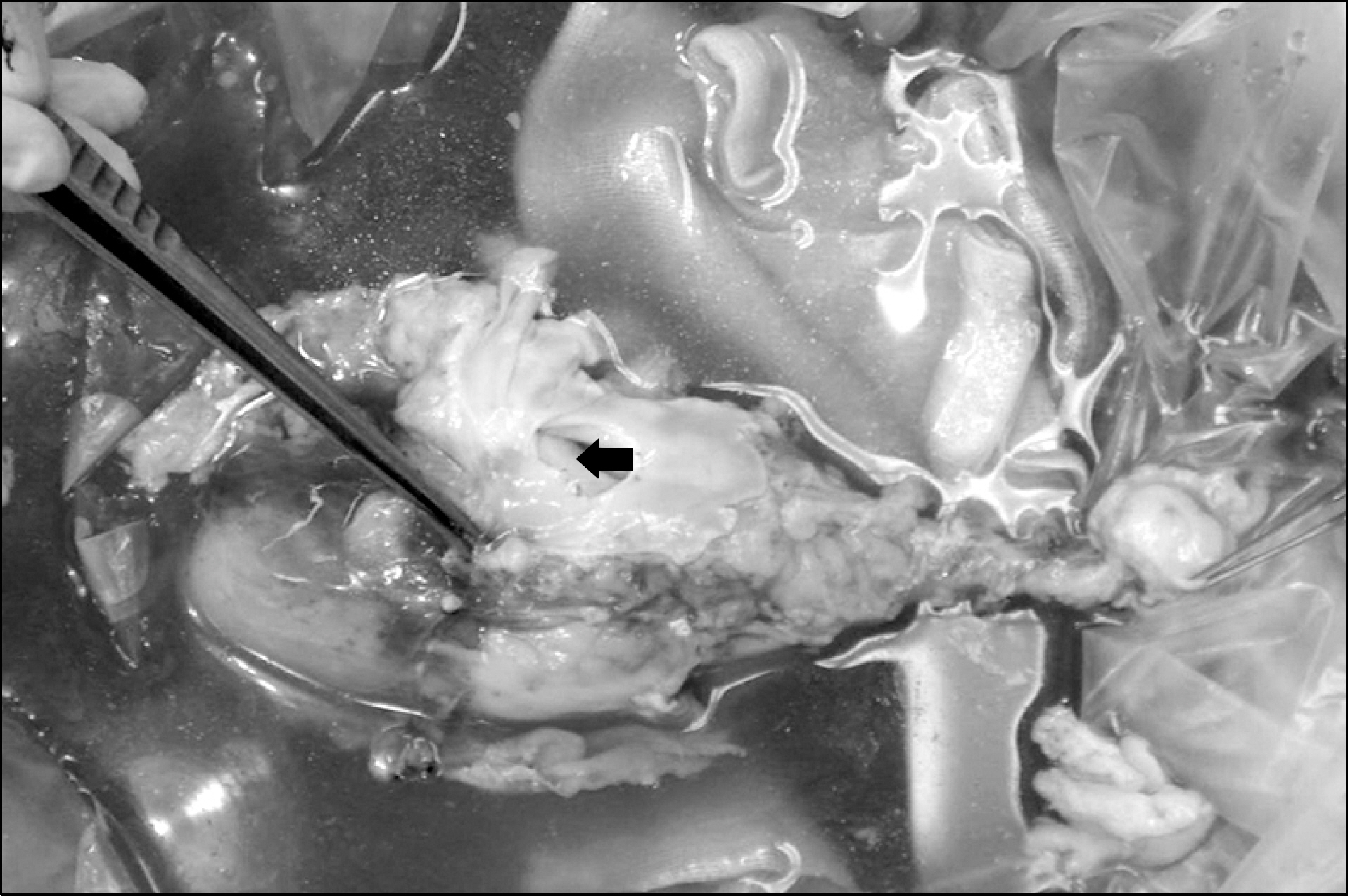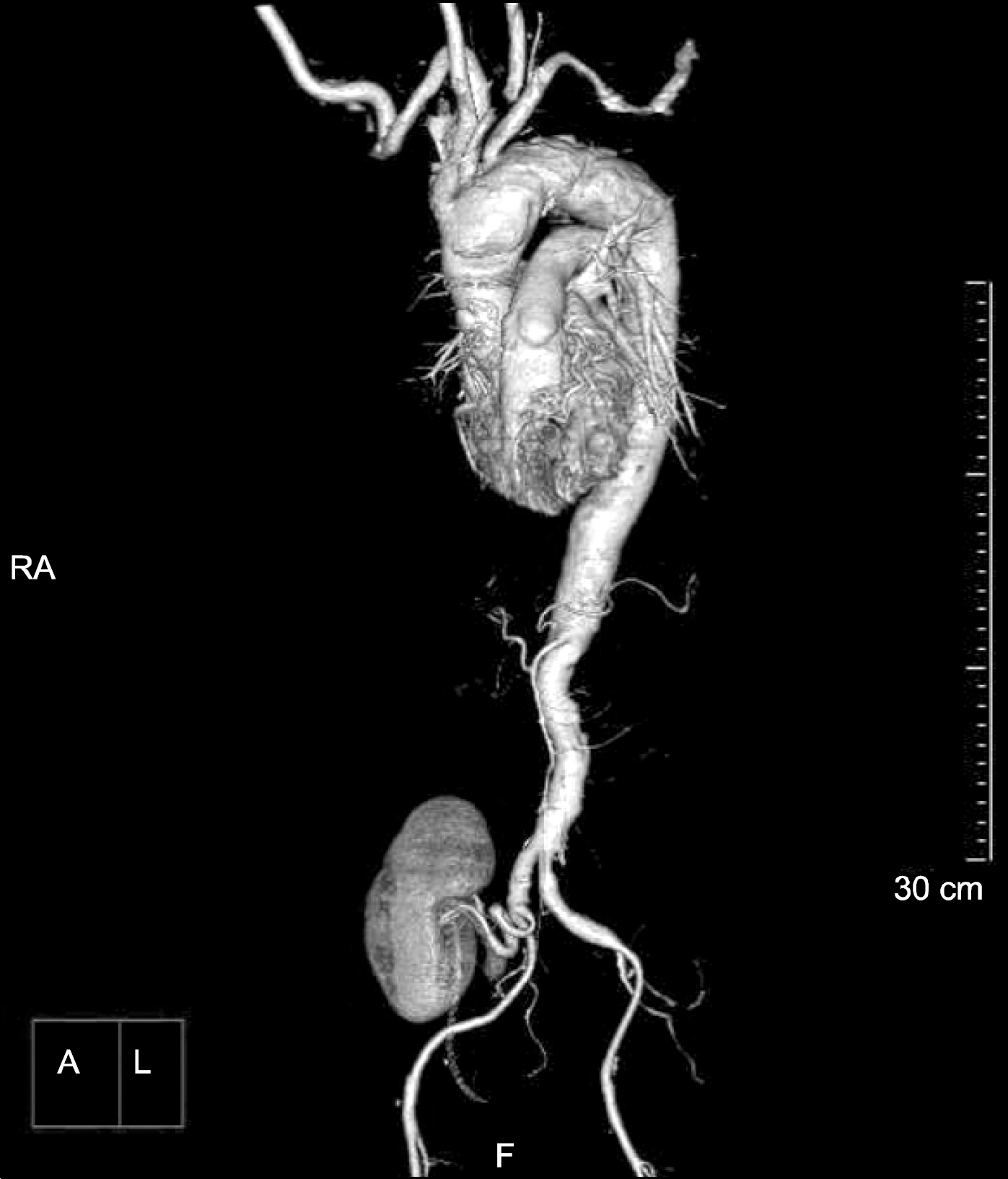J Korean Soc Transplant.
2013 Jun;27(2):62-66.
Successful Reuse of a Kidney Allograft from a Brain-Dead Donor into a Second Recipient: A Case Report
- Affiliations
-
- 1Department of Surgery, Ulsan University Hospital, University of Ulsan College of Medicine, Ulsan, Korea. ud3012md@medimail.co.kr
- 2Department of Nephrology, Ulsan University Hospital, University of Ulsan College of Medicine, Ulsan, Korea.
- 3Department of Pathology, Ulsan University Hospital, University of Ulsan College of Medicine, Ulsan, Korea.
Abstract
- The limited donor organ supply is a main problem for transplant surgeons in Korea, and forces them to use organs from extended sources. In one such case, we reused a transplanted kidney allograft in August 2012. This was the first successful case involving the reuse of a transplanted kidney allograft in Korea. The kidney donor was a 44-year-old man brain-dead due to spontaneous subdural hemorrhage. He received a kidney transplant from his sister in 2006. The second recipient was a 59-year-old man who had been receiving hemodialysis for 11 years. There were full human leukocyte antigen (HLA) matches between the first donor and the first recipient, and two HLA mismatches between the first donor and the second recipient. Fortunately, we were able to perform a crossmatch test between the first donor and the second recipient as well as the first recipient and the second recipient (with the first donor's agreement). We used the left iliac artery for perfusion instead of the aorta during organ procurement. The cold ischemic time was 4 hours and the initial kidney function was excellent. The patient has been doing well, without any significant complications or rejections, for 3 weeks. His last serum creatinine level was 0.91 mg/dL. Our case shows that the reuse of kidney allografts could be a possible solution for the shortage of donor kidneys. However, this method requires careful consideration and an agreement among participants before its performance.
Keyword
MeSH Terms
Figure
Reference
-
1). Lucarelli G, Bettocchi C, Battaglia M, Impedovo SV, Vavallo A, Grandaliano G, et al. Extended criteria donor kidney transplantation: comparative outcome analysis between single versus double kidney transplantation at 5 years. Transplant Proc. 2010; 42:1104–7.
Article2). Perico N, Ruggenenti P, Scalamogna M, Remuzzi G. Tackling the shortage of donor kidneys: how to use the best that we have. Am J Nephrol. 2003; 23:245–59.
Article3). Rentsch M, Meyer J, Andrassy J, Fischer-Fröhlich CL, Rust C, Mueller S, et al. Late reuse of liver allografts from brain-dead graft recipients: the Munich experience and a review of the literature. Liver Transpl. 2010; 16:701–4.
Article4). Graetz K, Cunningham D, Rigg K, Shehata M. Expansion S of the organ donor pool by the reuse of a previously transplanted kidney: is this ethically and scientifically val-id? Transplant Proc. 2002; 34:3102–3.5). Celik A, Saglam F, Cavdar C, Sifil A, Gungor O, Bora S, et al. Successful reuse of a transplanted kidney: 3-year follow-up. Am J Kidney Dis. 2007; 50:143–5.
Article6). Andrés A, Morales JM, Lloveras J. Reuse of a transplanted kidney. N Engl J Med. 1993; 328:1644.
Article7). Kamar N, Rischmann P, Guilbeau-Frugier C, Sallusto F, Khedis M, Delisle MB, et al. Successful retransplantation of a kidney allograft affected by thrombotic microangio-pathy into a second transplant recipient. Am J Kidney Dis. 2008; 52:591–4.
Article8). Bryan CF, Abdulkarim B, Forster J, Nelson PW, Diederich D, Murillo D, et al. A new role for the virtual crossmatch in kidney allograft reuse. Transplantation. 2010; 89:764–5.
Article
- Full Text Links
- Actions
-
Cited
- CITED
-
- Close
- Share
- Similar articles
-
- Reuse of liver allograft from a brain-dead recipient: A case report
- Reuse of liver allograft from a brain-dead recipient: a case report
- Outcomes of reused transplanted kidneys using cases from the Korean Network for Organ Sharing database
- Evaluation of the Recipient and Donor in Living Kidney Transplantation
- Successful renal artery reconstruction using a polytetrafluoroethylene graft in living donor kidney transplantation: a case report






